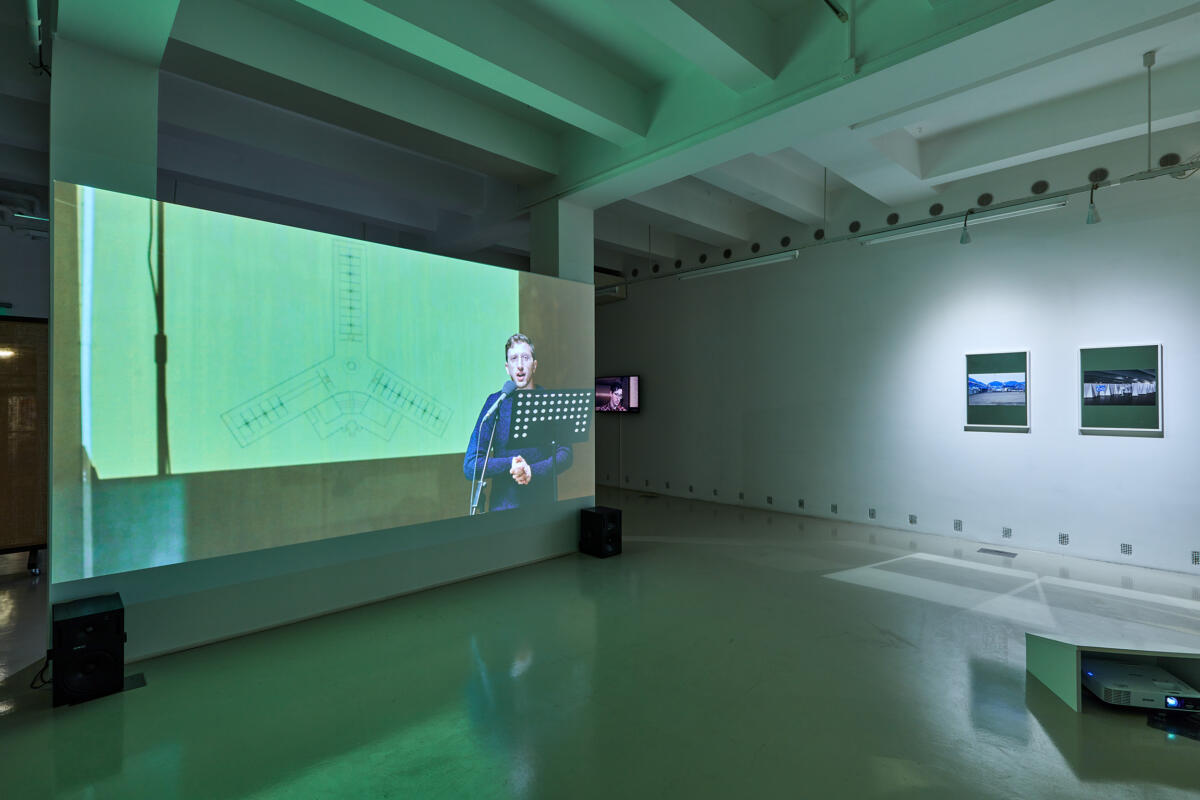![[EN/HU] ‘Agency of Undertones’ at Trafó Gallery](http://blokmagazine.com/wp-content/uploads/2020/10/11-agency-of-undertones-trafo-gallery-1200x800.jpeg)
[EN]
My only weapon is listening. Listening, in which the power of silence meets the potential of attention to the audible layers. Listening, which is able to reveal what extends beyond the visible layers and to perceive sounds and voices that are masked, hardly accessible or silenced. The leaking noise of suppressed gunshots and beatings, the barely detectable rumbling of violence, of abuses of power and of distorted facts as well as sounds that resist the limiting force of walls or fences.
Trafó Gallery provides space for these sounds and for a kind of attention that is focused on the underlying layers that filter through surfaces. It is this kind of attention that distinguishes hearing from listening, sounds from undertones, and that leaves room for concealed truths and hidden intentions and tunes in to the vibrations of subdues sounds and silences.
The protagonist of the video work entitled Sacha (Listening) by Imogen Stidworthy is Sacha van Loo, who works for the Antwerp police and, having been blind since birth, he has highly-developed echolocation skills. He is fluent in seven languages and recognizes several accents and dialects. Sacha puts down and analyses voice recordings made during the surveillance of suspects via telephone: he searches for unspoken intentions and undertones hidden behind spoken worlds, as well as information concealed by utterances, language codes, inflexions and in-between the layers of audible sounds. Sacha’s focused attention and particularly sensitive attitude to the hidden dimension of voices is thus able to identify certain subjects involved in a crime or to provide evidence for a legal case.
Similarly to Stidworthy’s video, in Lawrence Abu Hamdan’s work, the boundaries between private and public space also become increasingly blurred. In his performance-video Walled Unwalled, the walls cease to be real frontiers: neither the walls of a house or a room, nor a thick prison wall that seems impenetrable, can stop the information transmitted by sound waves and vibrations that pass through them, which can even serve as conclusive evidence in legal cases. One of the cases cited in the video is based on acoustic investigations of a Syrian prison building and on testimonies of former detainees under forced interrogation. This prison, like many other prisons built in the 60s and 70s around the world, can be traced back to the prison architecture archetype developed by the GDR, in which the reverberation of sound within the building plays a central role and assists the surveillance of prisoners.


In addition to carceral environments, the acoustic-architectural innovations of the GDR have also been implemented in the design of radio buildings and radio studios. An example of this is one of the radio studios in Berlin’s Funkhaus building, that also appears in Abu Hamdan’s video work. The GDR Radio (Rundfunk der DDR) operated in this building at the time, but the propaganda broadcast from here was not only aimed to the eastern side, but spoke in double directions, as the signal could also be received on the western side of the wall.
Roman Štětina’s video work was shot in another significant radio building of the Eastern Bloc, that of the Czech Radio in Pilsen. The Pilsen Radio Building was the first facility in Eastern Europe built specifically for the purposes of radio broadcasting. The studios, which were designed in the mid-1940s but inaugurated only in 1956, were already considered technologically obsolete when they were completed, because with the advent of audio tapes, the voices of the different characters could be recorded and edited separately, so it was no longer necessary for all the performers and technicians to be present in a studio space simultaneously. The video features an actor who presents one of the studio’s archaic props called a “flap” or sometimes “whip” with a sound imitating a rifle shot. Štětina creates confusion between the audible and the visible, the real and the false by the simple gesture of exchanging the sound of the „flap” for the sounds of real gunshots from a sound effect data bank.
Andreas Fogarasi’s works contemplate on upper layers and coverings. With the subtle and delicate attention characterizing his practice, he not only observes but also sees through these surfaces. His photographs depict seemingly ordinary environments, yet they also reflect the structures hidden beneath these exteriors and the processes by which a certain group represents itself, and seeks to shape, transform, disguise, or obscure certain elements of reality.

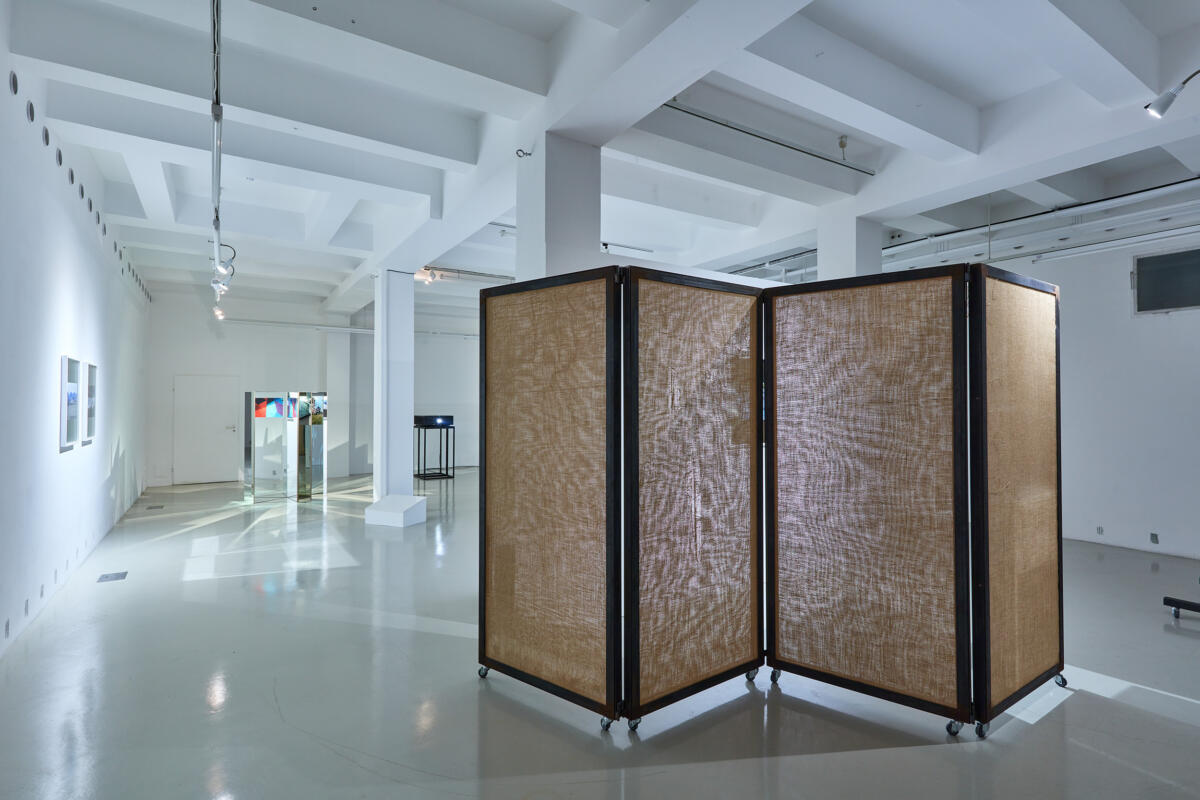



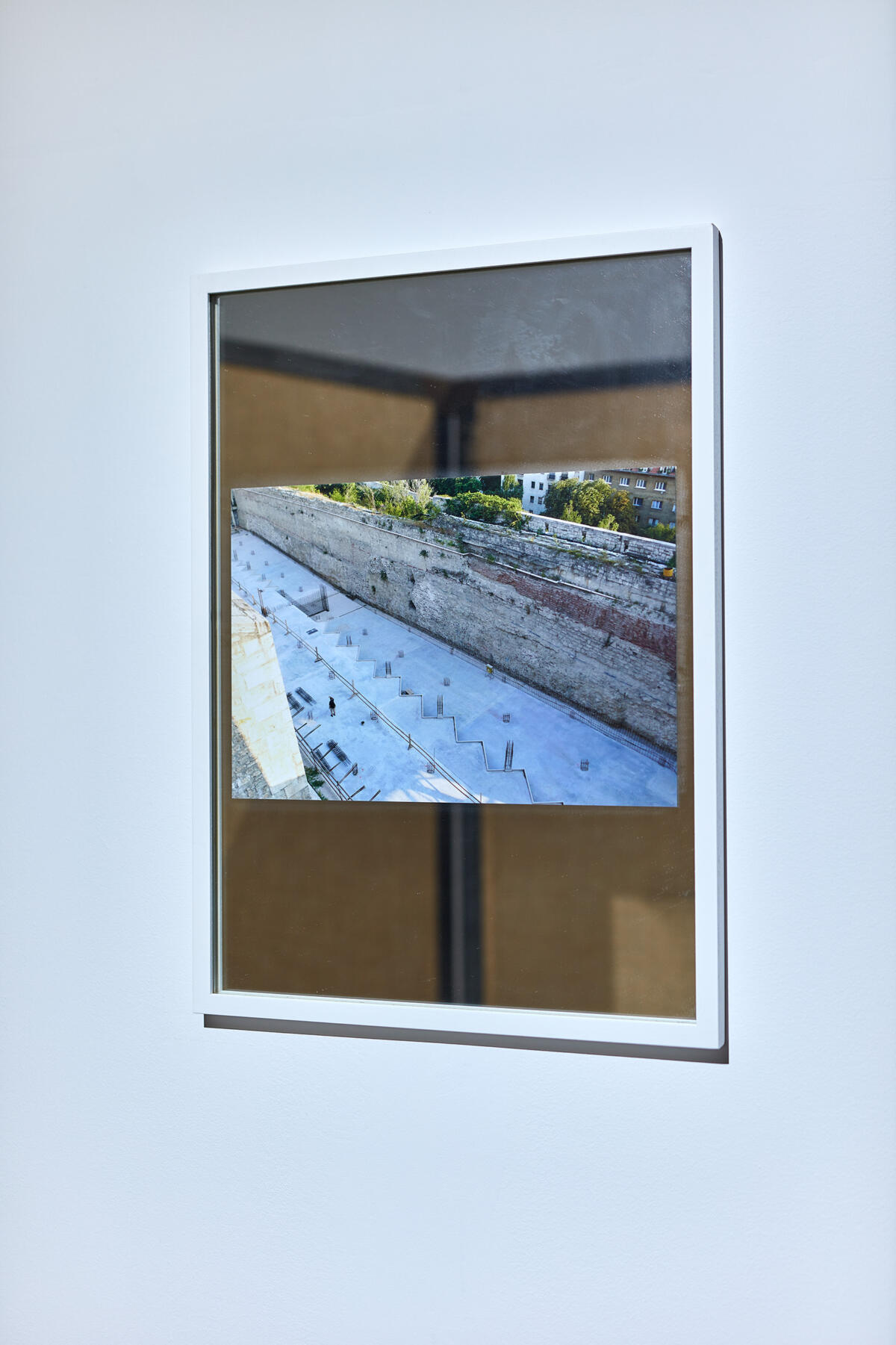


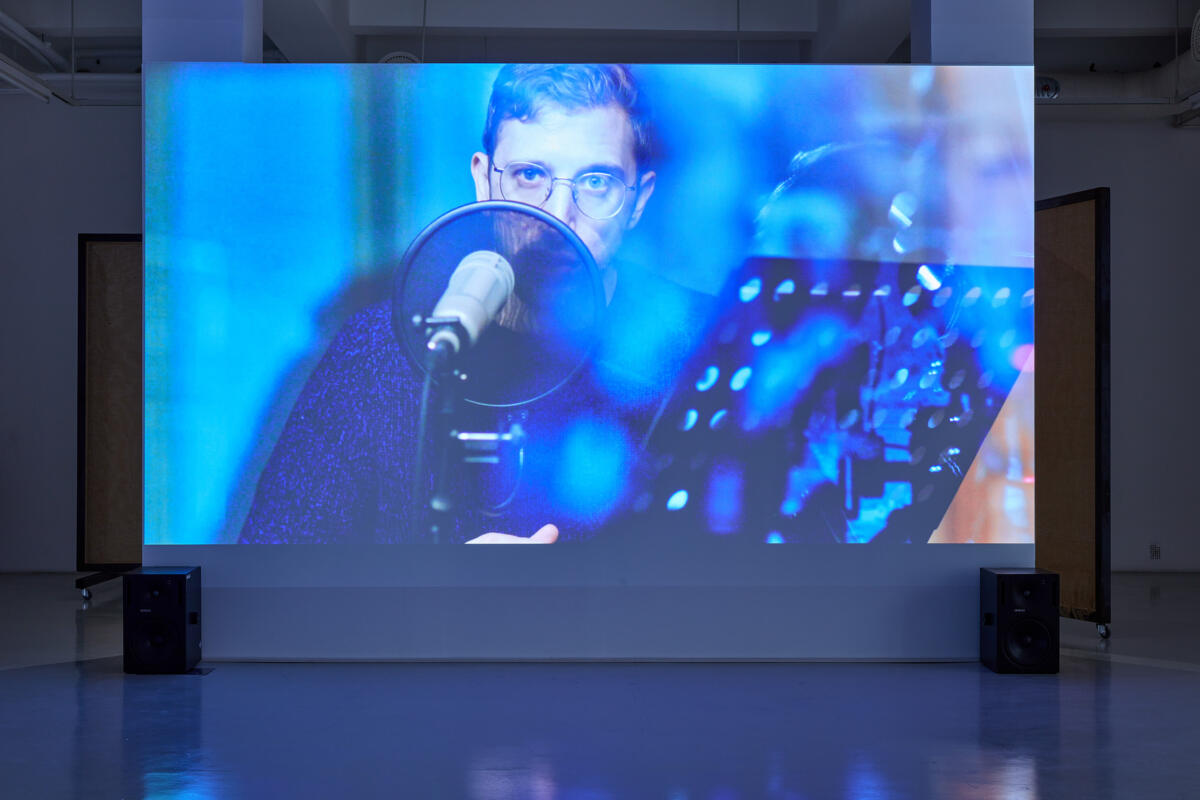
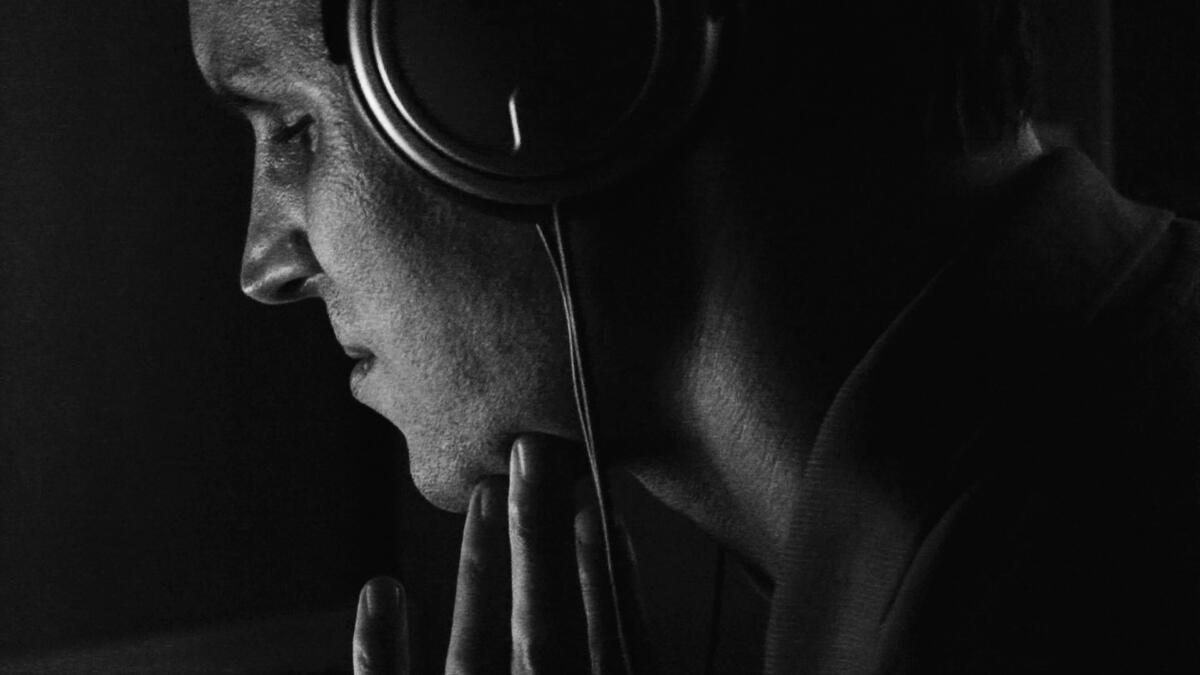
[HU]
Egyetlen fegyverem a hallgatás. A hallgatás, melyben a csend ereje és a hallható rétegekre való figyelem lehetőségei találkoznak. A hallgatás, mely képes felfedni azt, ami a látható rétegeken túl húzódik és kihallani mögüle a rejtett, elsőre nem észlelhető, vagy elhallgattatott hangokat; a tompított lövések és ütések átszűrődő zaját; az erőszak, a hatalmi visszaélések és az elferdített tények alig érzékelhető morajlását; és azokat a hangokat, amiket nem tudnak falak vagy kerítések megállítani.
A Trafó Galéria ezeknek a hangoknak és a figyelem egy olyan fajtájának ad teret, mely a felületeken átszűrődő mögöttes rétegekre irányul. Ez a fajta figyelem az, ami a hallást és a hallgatást megkülönbözteti egymástól, ami a hallott és a kihallott információkat különválasztja, ami teret enged az elfedett igazságoknak, és ami hallgat a halk hangok és a csend rezgéseire.
Imogen Stidworthy Sacha (Listening) című videójának főszereplője az antwerpeni rendőrség egyik alkalmazottja, Sacha van Loo, aki, mivel születésétől fogva vak, különösen kifinomult a hallása. Hét nyelven beszél tökéletesen és számos akcentust és dialektust felismer. Sacha telefonos lehallgatások felvételeit jegyzi le és analizálja; az elhangzott mondatok jelentése mögött megbúvó, a beszédmódból, rejtett nyelvi kódokból, hanghordozásból vagy a hallható hangok egyéb rétegeiből kihallható információkat keresi. Sacha koncentrált figyelme és különösen érzékeny viszonyulása a hangok rejtett rétegeihez így képes akár pontosan beazonosítani a beszélőket és bizonyítékot szolgáltatni egy-egy ügy kapcsán.
Stidworthy videójához hasonlóan Lawrence Abu Hamdan művében szintén eltűnnek a privát és a publikus tér közötti határok. Walled Unwalled című videójában a falak megszűnnek valódi határt jelenteni: egy ház vagy szoba fala, de még egy áthatolhatatlannak tűnő vastag börtönfal sem képes megállítani a rajtuk keresztül átszűrődő hanghullámok és rezgések által közvetített – akár perdöntő bizonyítékként is felhasználható – információkat. A videóban bemutatott esetek egyike egy szíriai börtön épületének akusztikai vizsgálatain és a kényszervallatásoknak alávetett fogvatartottak vallomásain alapszik. Ez a börtön – ahogy sok egyéb 60-as, 70-es években épült börtön világszerte – abból az NDK által kifejlesztett börtönépítészeti archetípusból eredeztethető, melyben központi szerepet játszik a hang terjedése az épületen belül, ami többek között a rabok felügyeletét is segíti.
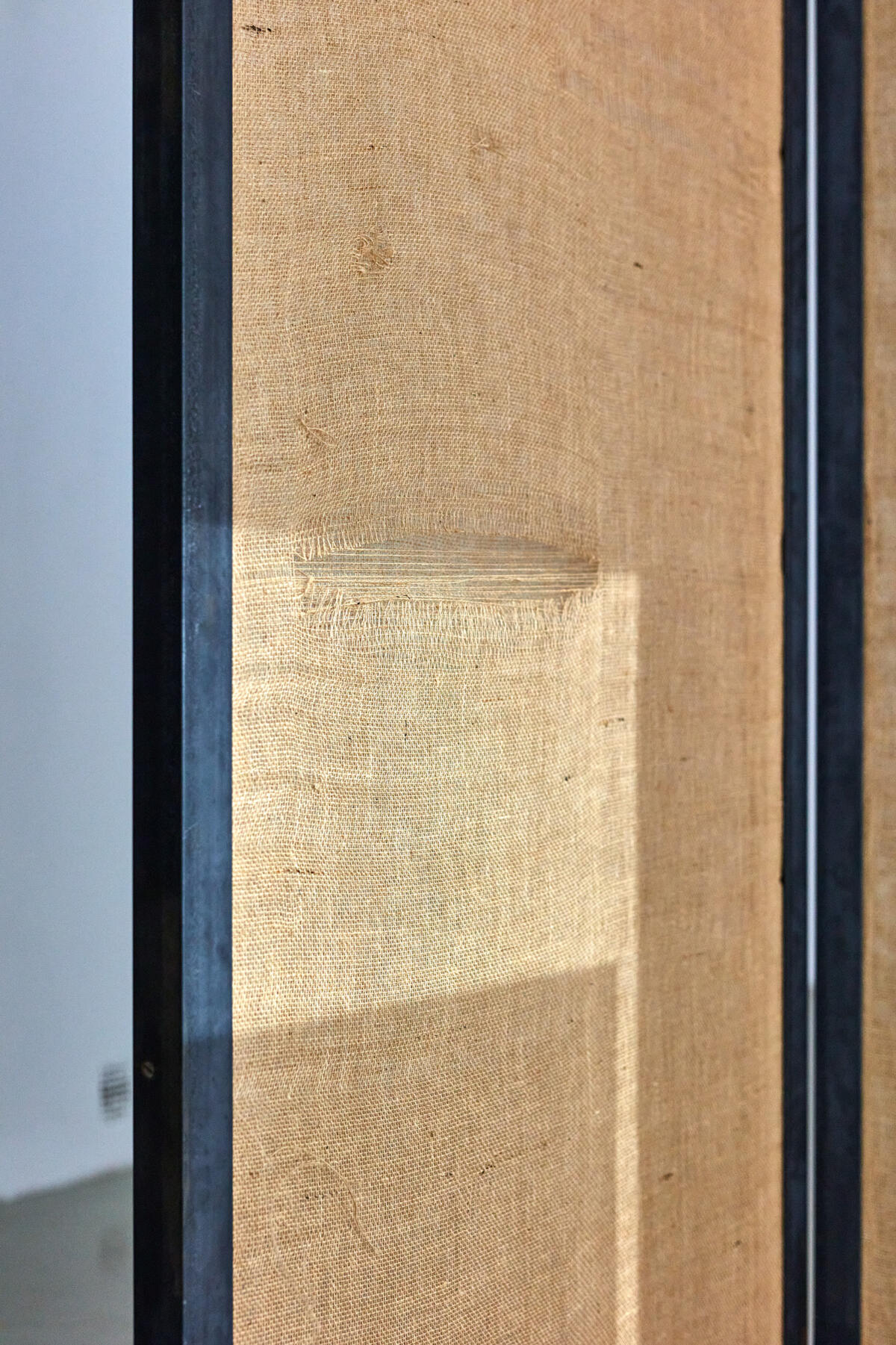
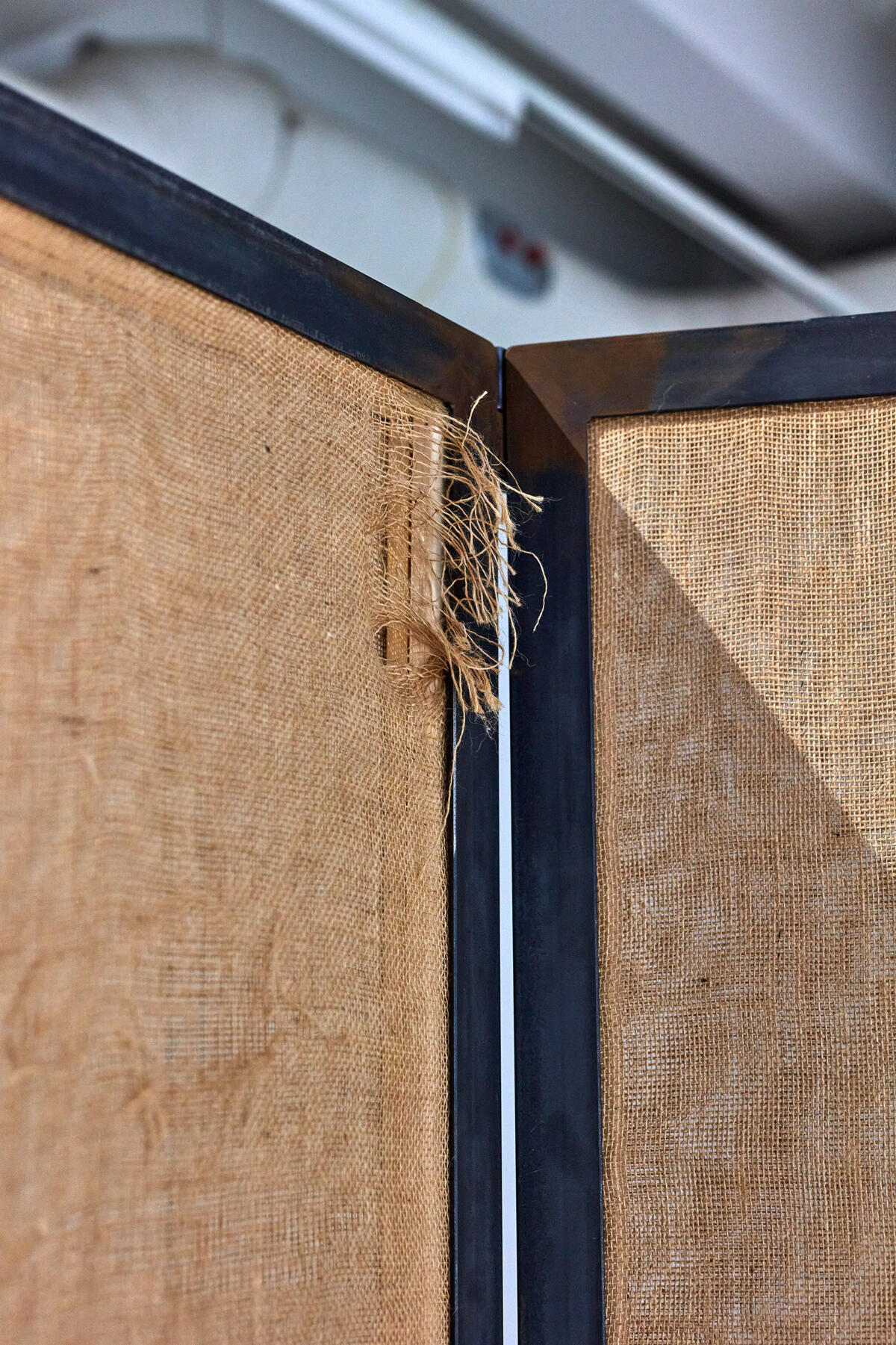

Az NDK legfrissebb akusztikai-építészeti újításait a börtönök mellett a korabeli rádióépületek és rádióstúdiók tervezésénél is felhasználták. Erre példa az Abu Hamdan videójában is látható berlini Funkhaus épületének egyik rádióstúdiója. Ebben az épületben működött annak idején az NDK Rádió (Rundfunk der DDR), az innen sugárzott propaganda azonban nem csak a keleti oldalnak szólt, hanem kétfelé beszélt, mivel a jel a fal nyugati túloldalán is fogható volt.
Roman Štětina a keleti blokk egy másik meghatározó rádióépülete, a pilseni Cseh Rádió egyik stúdiójában forgatta a Studio no. 2. (Slapstick) című videóját. A pilseni rádió épülete Kelet-Európa első, kifejezetten rádióállomásnak szánt létesítménye. Az 1940-es évek közepén tervezett, de csak 1956-ban átadott stúdiók technológiai szempontból már elavultnak számítottak mire elkészültek. A hangszalagok megjelenésével az egyes szereplők hangjai külön rögzíthetővé és vághatóvá váltak, és így többé már nem volt szükség arra, hogy egy-egy rádiójáték felvételekor az összes szereplő egyidejűleg jelen legyen a térben. Štětina videójának szereplője a stúdió egyik eredeti és nem használt kellékét mutatja be, egy csapót, aminek hangja puskalövést imitál. Štětina egy egyszerű gesztussal kelt zavart a hallható és a látott, a valós és a hamis rétegei között azzal, hogy a csapó hangját valós puskalövések hangjaira cserélte ki.
Andreas Fogarasi művei a felső rétegekkel és burkolatokkal foglalkoznak. A rá jellemző szubtilis, finom figyelem segítségével nemcsak megfigyeli, hanem át is lát ezeken a felületeken. Fotóin elsőre hétköznapinak tűnő környezetek láthatók, melyek mégis tükröznek valamit a felületek alatt megbúvó struktúrákból és azokból a folyamatokból, melyekkel egy-egy közeg reprezentálja magát, és igyekszik formálni, átalakítani, leplezni vagy elfedni a valóság bizonyos elemeit.
Imprint
| Artist | Lawrence Abu Hamdan, Andreas Fogarasi, Roman Štětina, Imogen Stidworthy |
| Exhibition | Agency of Undertones |
| Place / venue | Trafó Gallery, Budapest, Hungary |
| Dates | 5 September – 18 October 2020 |
| Curated by | Borbála Szalai |
| Photos | Dávid Biró |
| Website | trafo.hu/ |
| Index | Andreas Fogarasi Borbála Szalai Imogen Stidworthy Lawrence Abu Hamdan Roman Štětina Trafó Gallery |



